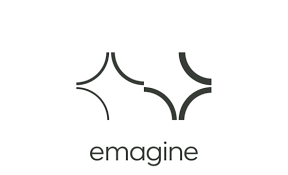Enchantingly beautiful, imaginative, poetic, humorous and precisely choreographed were attributes with which critics praised Tina TarpgaardÂ’s Frost when it premiered in October 2009. The piece was choreographed for Dansk Danseteater whose dancers also perform FrostÂ’s revival in Dansehallerne this autumn.
After its premiere Frost won the prestigious Reumert Performing Arts Award for the year’s best dance performance. “Dancers don’t tend to resemble young
polar bears. Just as the stage floor doesn’t usually resemble ice floes,” noted the jury. “But that’s how it was in Frost. And the dancers got wet paws, while the glacial poetry melted into this season’s most beautiful waltz.”
The 39 year-old choreographer Tarpgaard was educated in both classical ballet and modern dance at the Swiss Rudra-Béjart School and the Rambert School in England. She is a founding member of the Copenhagen-based Recoil Performance Group. Together with a composer, Tarpgaard established the group in 2003 to facilitate collaborations between different art forms. For Frost, as for other recent works, Tarpgaard has focused on the meeting between dance and digital visual art and worked with the ‘software artists’ Ole Kristensen and Jonas Jongejan.
“Through dance, live video and electronic sound”, it is the Recoil group’s declared aim to create performances that “explore technology as an equal and interactive partner to the performing artist”.
“We work with tracking technology and the intricacies of interactive software on stage because it enables us to create dynamic places and environments that depend on human presence,” explains Kristensen.
Jongejan insists that while software programming can be a powerful tool to serve a certain purpose in art, he has no interest in it as an end in itself. In creating a performance, Tarpgaard and her collaborators look for a balance between the motion responsive space and the more direct physicality of bodies dancing in it.
For the choreography of Frost, Tarpgaard makes use of the dancersÂ’ versatility in both ballet and modern dance techniques. And the use of technology adds another dimension to the choreography: graphic projections trace motion in space and thus visualise them beyond their fleeting moment of performance. A specially developed software freezes imprints of the dancersÂ’ movements and lets them remain in space like digital sculptures.
This is quite an addendum for dance: the art form is traditionally characterised by its ephemerality and has no widely-established notational systems for movements. Given this specificity of dance, it is unsurprising that Tarpgaard and her collaborators are in illustrious international company when they work with visualising movement independently from the dancersÂ’ bodies.
But movement isn’t just traced in Frost. Rather, the graphic projections develop a life of their own and interact with the dancers as independent entities. And sound is yet another element that both the video scenography and the dancers’ movements respond to. Jens Hørsving has composed most of it, but Tarpgaard also choreographs a duet to Leonard Cohen’s Take this Waltz.
Frost
Dansehallerne, Pasteursvej 14-24, 1799 Cph V; performances at 20:00 on Fri, 17:00 and 20:00 on Sat; tickets 175kr, 105kr for under 25-year-olds; www.dansehallerne.dk















